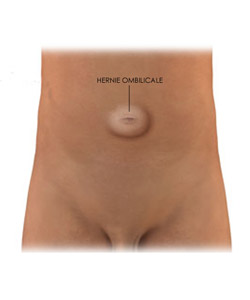Gros ventre ? C'est peut être un Diastasis ? : la Méthode DREAM
Discover
Ventral hernias come in the form of a bulge at the navel (umbilical hernia) or a little bit higher, on the midline, between the sternum and the navel (epigastric hernia).
These types of hernias, though small in most cases, can be painful. As time goes on, the hernia orifice tends to enlarge, the hernia becomes bigger, the risk of complication increases and the surgical repair is more difficult. Therefore, it is recommended that these hernias are operated on before they are too big.

The aim of surgery is to close the hernia orifice to prevent complication, and at the same time to restore cosmetic.
Suturing can be used for small hernias, up to one cm in size. For larger orifices, using a patch is recommended because the risk of tearing and the resulting recurrence rate are high, due to the weakness of tissues.
There are different ways to place the patch. The simplest one consists of incising the skin at the navel and trying to deploy the patch through the hernia orifice, which is not easy.
Another technique consists of fixing the patch on the inner surface of the abdominal wall, in the abdominal cavity by laparoscopic approach. This method provides better cosmetic result, but the staples required to fix the patch can induce severe postoperative pain. Moreover, the patch is in contact with the intestine, what can induce the formation of adhesions, which can cause intestinal complications.
The method of the Hernia InstituteParis
To prevent the drawbacks of the intraperitoneal patch, we have developed a totally extraperitoneal technique. This procedure does not involve any incision at the navel. The operation is totally carried out through three small holes by endoscopic method. The patch is deployed in the preperitoneal space, between the muscular wall above and the peritoneum under. Therefore, both drawbacks of the intraperitoneal patch are avoided: no staples are required, thus not pain, and the patch is separated from the intestine by the peritoneum, thus no risk of intestinal adhesions.